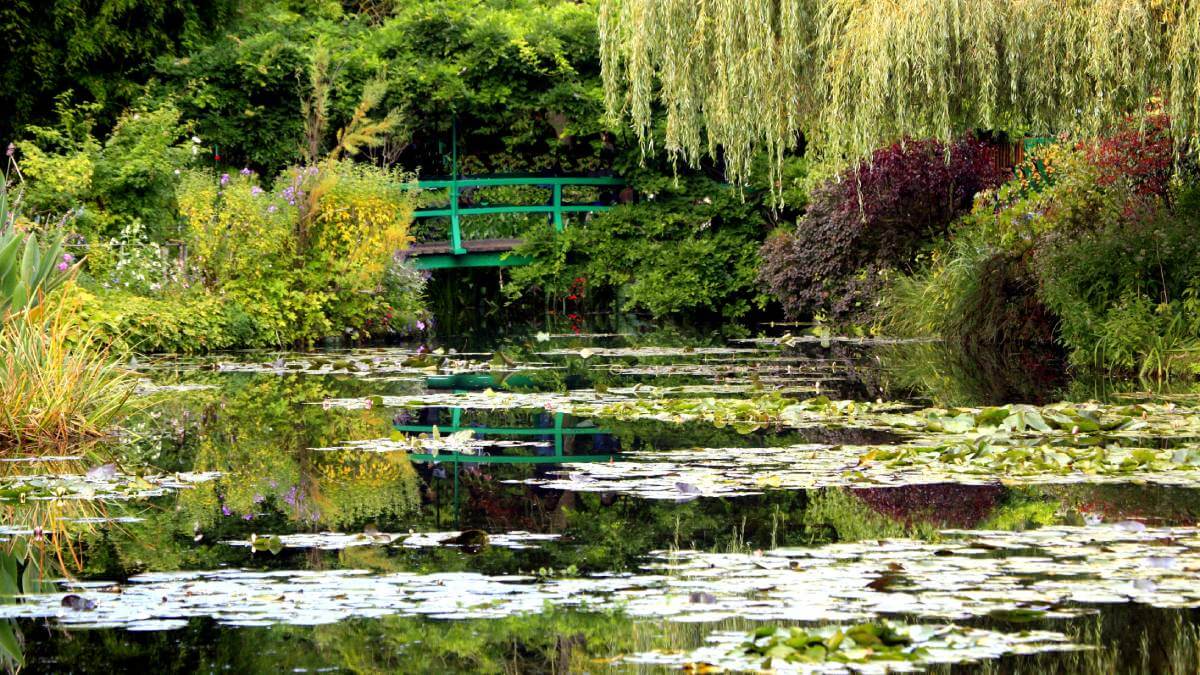Artists are often influenced and inspired by the world around them. The sights, sounds and emotions they experience in their surroundings can ignite a creative spark, leading to the creation of stunning works of art. Whether it is breathtaking landscapes, the vibrant colours of a bustling city, or the serenity of a secluded forest, artists find inspiration in every corner of the world.
Here are some enchanting destinations that have been immortalised in famous paintings, showcasing some of the most mesmerising landscapes ever known.
A Starry Night inspired by Saint-Rémy-de-Provence, France
In May 1889, Vincent Van Gogh made the voluntary decision to seek treatment at Saint-Paul de Mausole psychiatric hospital. His dream of establishing an artists’ colony in Arles, a small city in France, had crumbled, and he was grappling with severe episodes of mental distress. However, it was during this challenging period that Van Gogh managed to produce this astonishing masterpiece.
Completed in June 1889, A Starry Night, an oil on canvas painting, depicts the view from his asylum room at Saint-Rémy-de-Provence, of the majestic Alpilles mountains just before sunrise. Cypress trees and vibrant fields of lavender evoke the sense of serene beauty depicted in the painting.
Ironically, Van Gogh initially considered this painting a failure. However, since 1941, the painting has been a permanent fixture in the collection of the Museum of Modern Art in New York City. Widely regarded as one of Van Gogh’s finest works, A Starry Night remains one of the most recognised paintings in the history of Western culture.
The Birth of Venus inspired by the city of Florence, Italy
Florence, the thriving centre of artistic innovation during the Renaissance, is where the essence of Botticelli’s The Birth of Venus comes to life. During this period, there was a resurgence of interest in classical mythology and the writings of ancient Greek and Roman authors. Botticelli, like many other Renaissance artists, drew inspiration from these classical sources and sought to revive these ideals in his artwork.
Botticelli was associated with the Medici family, who were prominent patrons of the arts in Florence, and received several commissions from them. It is said that this painting was commissioned for the Villa di Castello, along the banks of the Arno River. The gardens, filled with lush flora, ornate sculptures and a grotto, became famous throughout Europe. The influence of the Villa di Castello can most prominently be seen in the Baroque gardens of the 17th and 18th centuries, the fountains of the Gardens of Versailles, the French Renaissance garden, and the French formal garden, among several others. (Villa di Castello)
The Great Wave off Kanagawa inspired by Kamakura, Japan
Visit Kamakura, a seaside city south of Tokyo, and witness the awe-inspiring might of The Great Wave off Kanagawa come to life. As you stand upon the shores, the towering waves crash against the coastline with Mount Fuji in the background, creating a breathtaking spectacle that echoes Hokusai’s iconic print. (The Great Wave Off Kanagawa Katsushika Hokusai – An Analysis)
The Great Wave off Kanagawa was created by the Japanese artist Katsushika Hokusai in the 1830s and is part of a series called Thirty-Six Views of Mount Fuji.
Mount Fuji holds sacred significance in Japanese culture and has been a subject of inspiration for artists throughout history. Hokusai’s inclusion of Mount Fuji in The Great Wave off Kanagawa adds a sense of awe-inspiring beauty and contrasts the mountain’s calmness with the turbulent forces of nature represented by the crashing waves.
Guernica inspired by Guernica, Spain
Guernica, a small Basque town with its haunting streets and quiet eeriness, embodies the powerful emotions depicted in Pablo Picasso’s masterpiece, Guernica. It is one of his best-known works and is regarded worldwide as one of the most powerful anti-war paintings in history.
The inspiration for this painting predominantly stemmed from the tragic events that unfolded in Guernica on 26 April 1937 when, during the Spanish Civil War, the town was bombed by the German Luftwaffe, supporting General Francisco Franco’s Nationalist forces.
The painting’s sombre palette, filled with distorted and anguished figures, serves as a powerful depiction of the horrors of war and the suffering inflicted upon innocent civilians. However, at its core, it also shows the strength and resilience of the human spirit.
Water Lilies inspired by Giverny, France
Claude Monet’s infamous and dreamy Water Lilies was inspired by the artist’s meticulously crafted gardens and personal sanctuary at his home in Giverny, France.
During the later years of his life, Monet devoted much of his time and energy to capturing the beauty of his water garden, with its delicate water lilies and lush foliage.
Located along the tranquil Seine River, this place offers a captivating experience where art and nature harmoniously intertwine.
Today, visitors can wander through the very gardens and immerse themselves in the world that inspired Monet’s masterpiece.
Have you seen any of these paintings in person? Which one is your favourite? Let us know in the comments section below.

